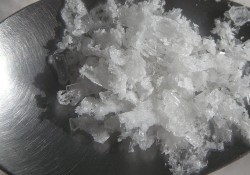Drug addiction
Tranquilizers – dangerous drugs
Tranquilizers it is accepted to call medicinal substances from group of psikhotrop. But application of these preparations is possible not only in the therapeutic purposes, some use them as drugs tranquilizers. The matter is that if considerably to exceed a… Continue Reading
Drug addiction – what is it?
Addiction is persistent and frequently recurring medical condition of the brain, that makes the affected individual obsessed with seeking for drugs and taking them no matter what catastrophic consequences it might bring to the addicted person or people closely related… Continue Reading
The influence of addictive substances on brain
When a person takes a dose of a drug, the chemical components of the substance interfere with the communication mechanism of the brain, affecting its normal work by changing the process of information exchange between nerve cells. Two most common… Continue Reading
Signs and symptoms of an overdosage narcotics
Overdosage signs Development of pathological process which begins a narcotic at an overdosage is preceded by poisoning, or effect of a high dose. Sometimes this stage proceeds is so transient that it isn’t possible to allocate it. The overdosage a… Continue Reading
Ketamine – Methods of Use
In social situations, ketamine is often used intranasally and orally. And though it can be injected, the rapid onset of effects from oral or nasal use makes it more convenient and marketable than the injectable forms.(1) It is primarily manufactured as… Continue Reading
History of Ketamine.
Ketamine, developed in 1962, was initially promoted as a fast acting general anesthetic.(1) A few years later, in 1970, the federal government approved ketamine for human use, and as a result it soon became popular as a battlefield anesthetic.(2) The first evidence… Continue Reading
What is ketamine?
Ketamine is considered a dissociative anesthetic (other examples of this drug are PCP and DXM). This means that the drug distorts the users perception of sight and sound and produces feelings of detachment from the environment and ones self.(1) The drug… Continue Reading
Opiates (agonists)
Opioids are drugs that alter the state of mind and perception of the environment. Sometimes opioids induce sleep, unconsciousness but does not occur even at high doses. Opiates have diverse chemical structure, but rather produce similar effects, due to the… Continue Reading
The history of heroin
The opium poppy has had a long history. Our earliest knowledge of its cultivation dates back to the ancient Mesopotamian and Sumerian cultures, who passed it on to the Assyrians, Babylonians, and Egyptians. The Greeks introduced opium to Persia and… Continue Reading
Marijuana: Physical Effects
When a person smokes or ingests marijuana, THC and other chemicals enter the user’s body. The chemicals make their way through the bloodstream to the brain, where THC and the neurotransmitter anandamide bond to cannabinoid receptors. High concentrations of these… Continue Reading
The history of marijuana
Marijuana first became popular in the United States with Mexican immigrants in the 1920’s and was quickly adopted by those in the jazz community. Later, the Great Depression of the 1930’s led to a growing hostility toward the increase in… Continue Reading










